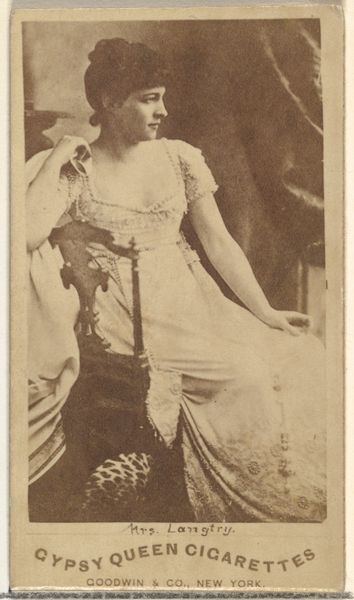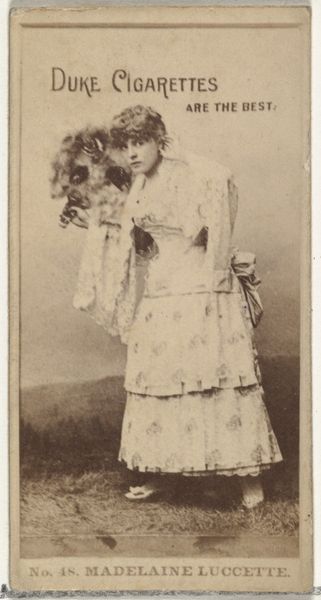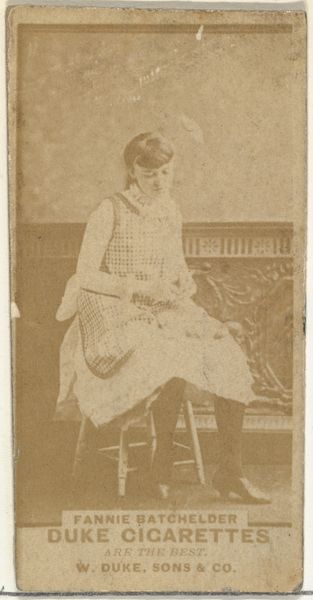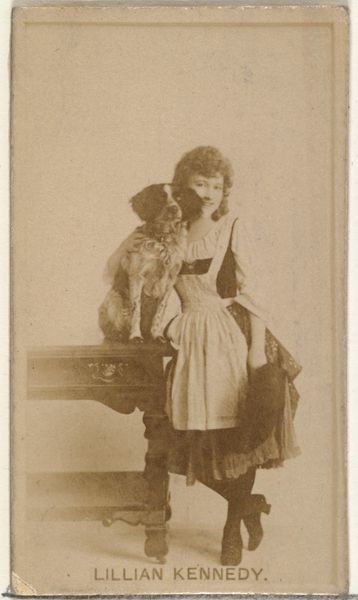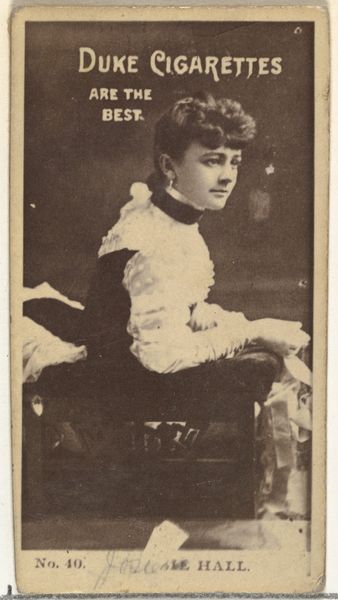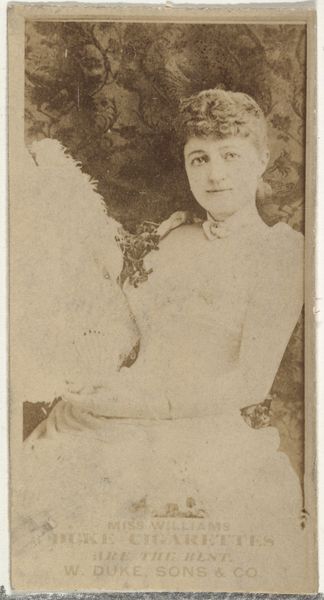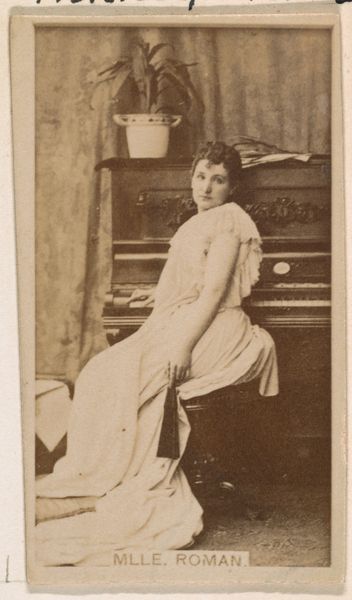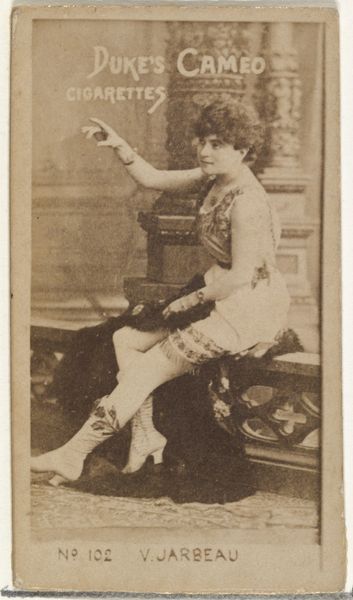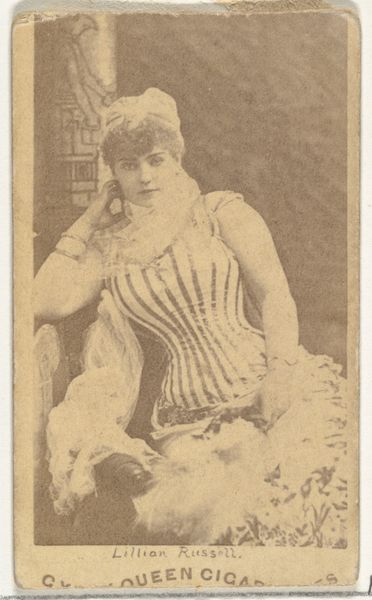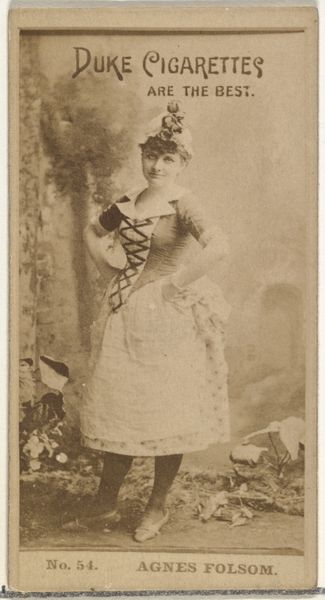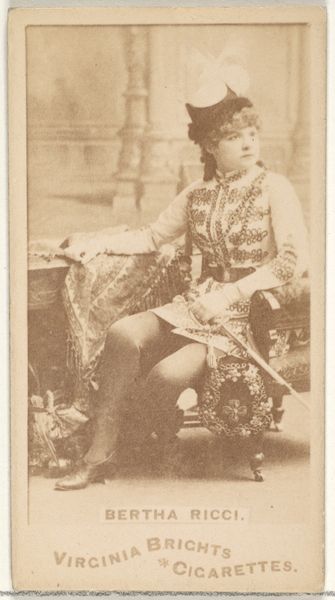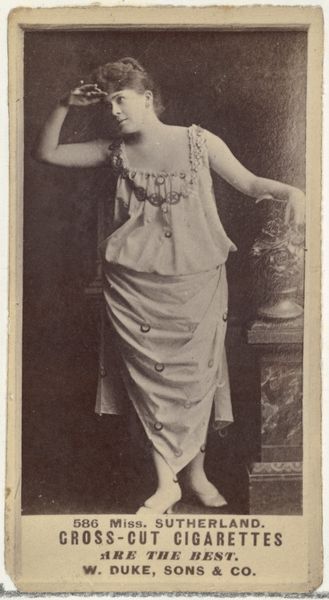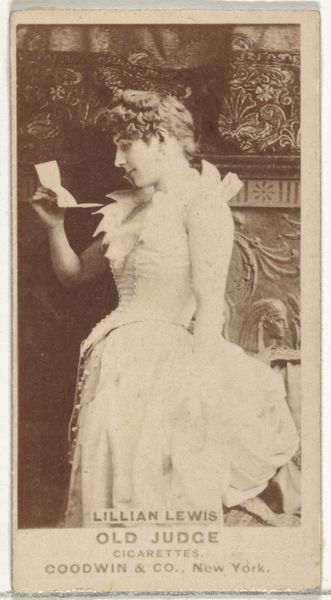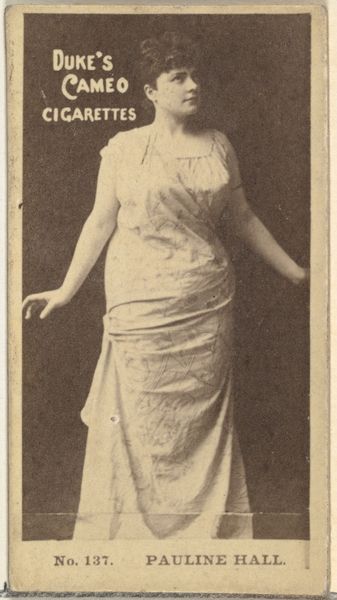
photography
#
black and white photography
#
photography
#
black and white
#
genre-painting
#
academic-art
#
realism
Copyright: Public domain
Editor: We're looking at "In the waiting room study - I venteverelset" by Theodor Severin Kittelsen, created in 1883. It's a black and white photograph. The woman's face seems very intense, and I'm struck by the overall somber tone. What catches your eye about the piece? Curator: The stark contrast inherent in black and white photography accentuates the geometric planes present here. Note how Kittelsen frames the subject – a single figure isolated within a clearly defined architectural space. The chair's curve opposes the orthogonal lines of the wall and baseboard, creating a subtle tension. Editor: So, it's less about the emotional state of the woman and more about the visual relationships? Curator: Precisely. Consider how the interplay of light and shadow models form; the figure's attire and face dematerialize, complicating legibility, especially the hands which obscure further assessment. Does that interruption encourage alternate readings? Editor: It does. The blurry, hidden aspect almost makes me want to look closer for symbolic clues, despite what you say. Are there deliberate disruptions in tonality beyond lighting? Curator: Observe how the artist uses halftones or textures to create atmospheric depth, modulating the smooth surface of the wall. Notice that the high contrast renders all material into patterns: the composition as much as what is composed. Editor: So, the real subject isn’t the woman, but how the photograph is put together. Interesting. I think I’m beginning to see that tension between form and figure that drives the piece. Curator: And it’s precisely within that tension where Kittelsen invites further interrogation, even today. Thank you.
Comments
No comments
Be the first to comment and join the conversation on the ultimate creative platform.
